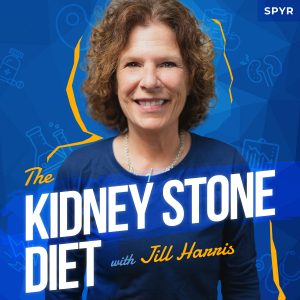This week Jill answers a listener question about mashed potatoes and how much milk we need to counteract the oxalate.
with Jill Harris, LPN, CHC
How much calcium does it take to safely eat high oxalate foods?

Have a question? Leave us a voicemail at (773) 789-8764.
Support the Show
- Kidney Stone Diet® Approved Products
- Join the Patreon
- Rate Kidney Stone Diet on Apple Podcasts or Spotify
Work with Jill
-
I really wonder how accurate all these food oxalate lists are, when I see black tea has 14 mg/cup, but instant black tea has zero. That tells me the food prep method is very important. The fact that oxalate is highly soluble and heat labile is essential, and nobody pays that any attention. An orange is very high, but orange juice is low. What if you just suck the juice out of an orange? Or is it the process of making frozen orange juice concentrate that makes the difference? And almonds have over 30 times as much calcium as oxalate! Does that mean anything?
-
Hi Guy,
It is all very confusing. The oj situation is the pith will have extra oxalate in the orange. People eat so many almonds, and that is the problem. They don’t eat a simple portion size along with almond flour, almond milk etc. They are just too high in oxalate. Stick to your hundred-daily limit. But honestly, the reason the oxalate was a problem is people ate tones of the highest oxalate foods without getting the RDA of calcium needs met. The oxalate part of the kidney stone diet is the easiest part to change. Get rid of almonds and spinach, eat all other higher oxalate foods in normal portions and get your calcium needs met each day. Once you do that, the fluids, salt, and sugar are the more challenging parts of the diet.
-

Learn how to prevent kidney stones and enjoy life again!
Join The Kidney Stone Prevention Course and I’ll show you exactly what you need to KNOW and DO to avoid forming stones.

5-Part Video Course

Live Calls with Jill

Personalized Plan

Easy-to-Understand

And much more…

Free Download
Get the only list for low-oxalate foods you’ll ever need.
You’ll also be the first to hear about special events and offers.






Leave a Reply